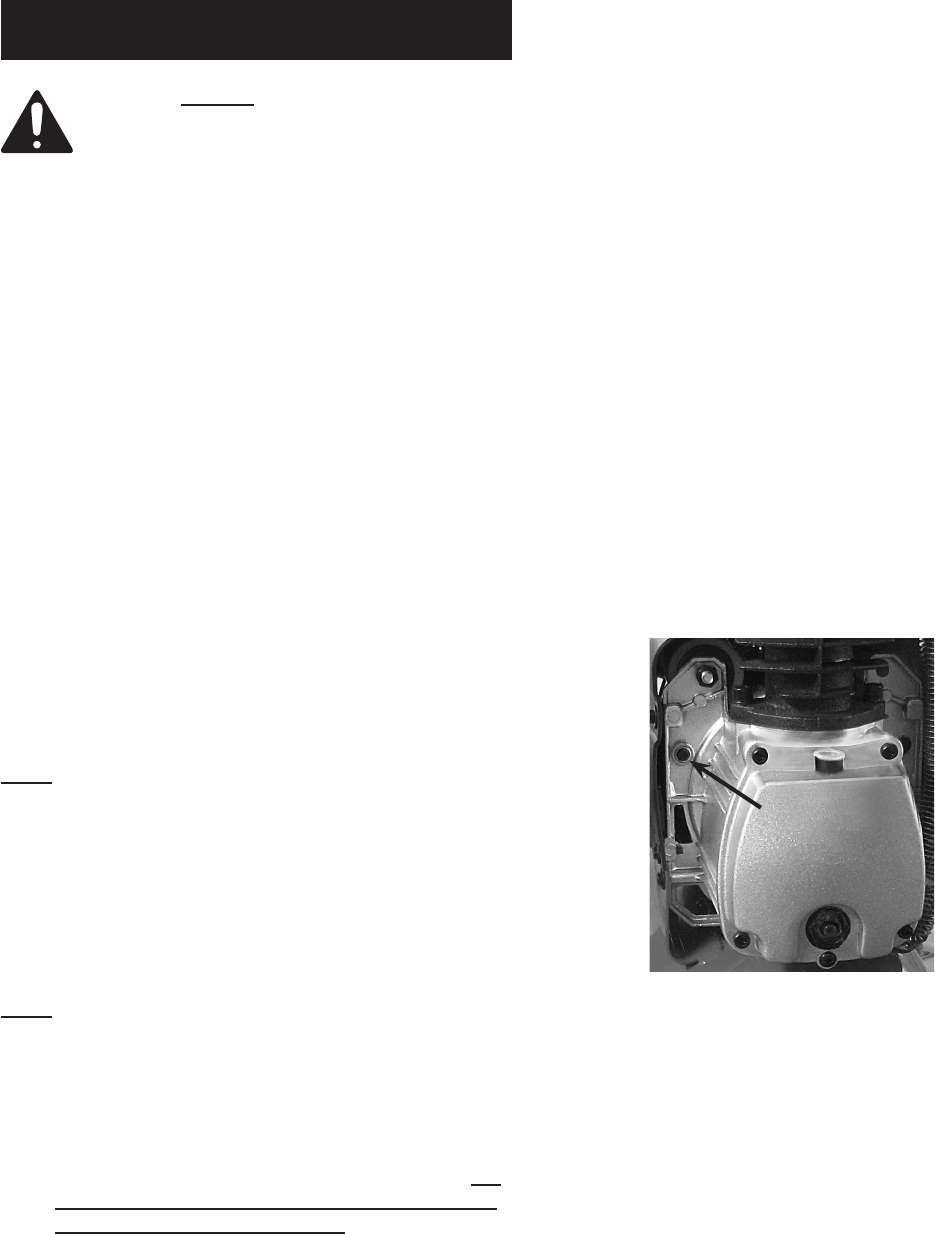
Page 11
For technical questions, please call 1-800-444-3353.
SKU 67501/68740
General Operating Instructions
Read the ENTIRE IMPORTANT SAFETY
INFORMATION section at the beginning
of this manual including all text under
subheadings therein before set up or use of
this product.
1. Close the Drain Valve (66).
2. Make sure all nuts and bolts are tight.
3. Check for oil leaks and check the oil level (See
Checking the Oil).
4. Close the in-line Shutoff Valve between the
compressor and the air hose.
5. Make sure the air tool’s throttle or switch is in the
off position.
6. Connect the air tool to the air hose.
7. Plug the Air Compressor Power Cord into a
grounded 120 V electrical outlet.
8. Open the in-line Shutoff Valve.
9. Turn the Power Lever ON.
10. Allow the Air Compressor to build up pressure until
it cycles off.
Note: At the beginning of the day’s rst use of the Air
Compressor, check for air leaks by applying soapy
water to connections while the Air Compressor is
pumping and after pressure cut-out. Look for air
bubbles. If air bubbles are present at connections,
tighten connections. Do not use the air compressor
unless all connections are air tight, the extra air
leaking out will cause the compressor to operate
too often, increasing wear on the compressor.
Note: As long as the Power Lever is ON, the operation of
the Air Compressor is automatic, controlled by an
internal pressure switch. The Compressor will turn
on automatically when the air pressure drops to 95
PSI as indicated on the Tank Pressure Gauge (53),
and will turn off automatically when the air pressure
reaches 125 PSI as indicated. IMPORTANT: The
internal pressure switch is not user adjustable, do
not make changes to the air pressure settings
of the internal pressure switch. Any change to
the automatic pressure levels may cause excess
pressure to accumulate, causing a hazardous
situation.
11. Adjust the Air Compressor’s Pressure Regulator
(74) so that the air output is enough to properly
power the tool, but the output will not exceed the
tool’s maximum air pressure at any time. Turn
the knob clockwise to increase the pressure and
counter-clockwise to decrease pressure. Adjust the
pressure gradually, while checking the air output
gauge to set the pressure.
12. Use the air tool as needed.
13. After the job is complete, turn the Power Lever
OFF.
14. Unplug the Air Compressor.
15. Close the in-line Shutoff Valve.
16. Bleed air from the tool then disconnect the tool.
17. Turn the Drain Valve (66), at the bottom of the
Tank, two turns to release any built-up moisture
and the internal tank pressure. Close the valve
after moisture has drained out. Do not remove the
Drain Valve.
18. Clean, then store the Air Compressor indoors.
Emergency Depressurization
If it is necessary to quickly depressurize the
Compressor, turn the Power Lever OFF. Then,
pull on the ring on the Safety Valve (73) to quickly
release stored air pressure.
Automatic Shut off System
1.
Reset Button
Figure 4
If the Compressor automatically shuts off:
a. Shut off all tools.
b. Wait until the Compressor cools down (about 10
minutes);
c. If the unit does not start up again on it’s own,
press the Reset Button to start the compressor;
d. Resume operation.
2. Possible causes of repeated automatic shut off of
the compressor are:
a. Using an extension cord that is too long or narrow;
b. An air leak or open hose causing the compressor
to cycle too often and build up heat.
3. Correct any issues before further use to avoid
damage to the compressor.


















